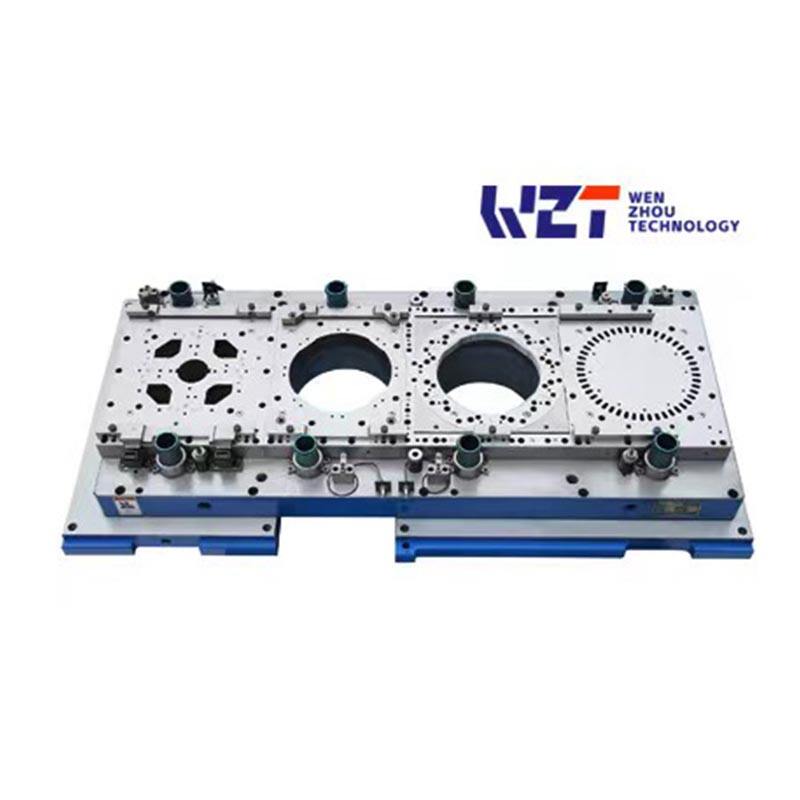Comprehensive Guide to Stamping Parts for the Beginner
So if you are new to stamping parts, then this a great guide for gaining insights on which way stamps your path. Stamped Parts - These are metal parts that are made of sheetsand then goes through processes like cutting, bending, pressing and shaping. It is regularly used to make precise and long-lasting complex parts in the automotive, aerospace, electronics industries among others.
Top Applications of Metal Stamped Parts
In this post, we will take a deeper dive into the world of Stamping Parts and how they can be advantageous or disadvantageous to our cause. One of the main reasons for that is Cost-effective production which means a lot more parts can be made quickly and at low cost. Furthermore, it is also renowned for precise pressings which means every component is constructed with extreme precision. Stamping can also produce parts of a variety that cannot be generated by other manufacturing processes because the flexibility inherent in stamping allows for highly complex, three-dimensional shapes to intrinsic features.
Innovation is Changing the Die Casting Parts Industry
Technological advances and material innovations will be the main drivers for the stamping parts industry in future. This has given rise to the evolution of advanced and excellent stamped components due to advancements in technology as well as material science. For example, the designing of stamping dies that once utilized computer-aided simulation tools has vastly improved the optimization process and made traditional trial-and-error practices nearly obsolete. In addition, the use of higher-strength steels and more advanced lightweight materials has yielded stronger yet lighter stamped parts that promise longer appeal.
Safety: The use of Stamping Parts
Although they are useful for many applications, it is important to understand the risks that stamping parts may present. A stamping press is a dangerous piece of equipment with, or without safety precautions. In addition, the stamping dies have sharp parts which must be meticulously taken care of in component maintenance and replacement processes. As such, it is crucial to have the appropriate training and safety equipment like gloves when working with stamped parts.
Top Points of Stamping Parts Performance Optimization
All parts must fit perfectly with one another to achieve the optimal performance and longevity of your stamped elements. Improper alignment can lead to performance issues and inefficiencies. These parts are often engineered to mesh well with other, heavier assemblies so it is very important that they be properly installed and anchored in place for maximum function.
Quality Stamping Parts + Service
Stamped Parts Supplier Selection: Quality and Customer Service at the Top of List Partner with a vendor that not only does well in your specific needs but also places customer care high on its priority. Choose vendors who prioritize customer services and process results quickly as well as provide amenable, on-deadline technical support for any issues.
Different Uses of Stamping Parts
Grouping products by the applicable level of commodity use and typical applications, stamping parts can be used between very low-usage commodities such as household appliances all the way to heavier-duty equipment. Used on larger items like automotive body panels, electronic devices and kitchen appliances they show up in a lot of places. Also, metal stamping has a very material role in the aerospace process to fabricate key parts that are part of aircraft structures and engines.
Ultimately: Why Stamped Parts Matter in Modern Manufacturing
Stamping parts are now being widely used by several industries that require state-of-the-art facilities and production processes with precision in the highest range. Ever-advancing technology has allowed continuous innovation in stamping and the development of hybrid components, but never at the expense of safety. For reliability and longevity, precision engineering based on choice components from reliable suppliers is essential. Choose a supplier that can accommodate your fabrication processes and provides excellent customer service to ensure that everything runs smoothly for you.

 EN
EN








































